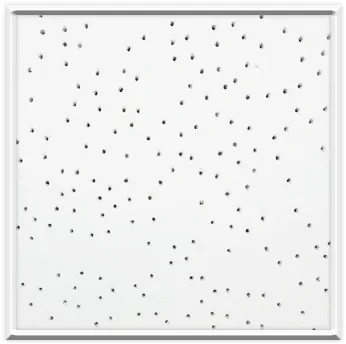Nov . 27, 2024 11:24 Back to list
Comparison of Gypsum and PVC Ceilings Key Differences and Advantages
Understanding the Differences Between Gypsum and PVC Ceilings
When it comes to interior design and construction, the choice of materials is critical, especially when it comes to ceilings. Two popular options that often come into consideration are gypsum and PVC (polyvinyl chloride) ceilings. Both materials have their own unique attributes, advantages, and disadvantages that cater to different needs and preferences. In this article, we will explore the differences between gypsum and PVC ceilings, helping you make an informed decision for your next project.
Material Composition
Gypsum ceilings are made from gypsum board, also known as drywall or plasterboard. Gypsum is a naturally occurring mineral composed of calcium sulfate dihydrate, which makes it a sustainable option. On the other hand, PVC ceilings are made from polyvinyl chloride, a type of plastic. PVC is a synthetic material derived from petroleum products and is often used in various applications across multiple industries.
Installation Process
The installation process for gypsum ceilings generally involves framing and attaching the gypsum boards to the ceiling frame. This requires a certain level of skill and expertise, as it often involves cutting the boards, securing them with screws, and then finishing the joints with plaster or tape. On the contrary, PVC ceilings offer a simpler installation process. PVC panels can be easily cut and clipped into place, often fitting together like a puzzle. This makes PVC ceilings a more attractive option for DIY enthusiasts or those seeking a quicker installation time.
Aesthetic Variety
When it comes to aesthetics, gypsum ceilings provide a smooth, seamless finish that can be painted, textured, or designed to any specification. This versatility allows homeowners and designers to create customized looks that match their interior design schemes. Gypsum ceilings can also accommodate intricate designs, such as coffered or tray ceilings, providing elegance and sophistication to any room.
PVC ceilings, while available in various colors and finishes, have a more modern and less classic appeal. They often come in a range of patterns, including wood and tile effects, but may not provide the same upscale look as a well-finished gypsum ceiling. Nevertheless, PVC ceilings are lightweight and can create a clean and contemporary look, especially in modern or minimalistic settings.
Fire Resistance and Durability
difference between gypsum and pvc ceiling

Fire resistance is a significant consideration in ceiling materials. Gypsum has excellent fire-resistant properties, mainly due to its ability to withstand high temperatures. It acts as a barrier and impedes the spread of flames, making it an ideal choice for spaces requiring additional safety. In contrast, PVC is less fire-resistant and can emit toxic fumes when burned. This factor must be carefully considered, especially in environments such as commercial spaces or buildings where fire safety regulations are stringent.
Regarding durability, PVC ceilings shine in areas exposed to moisture, such as bathrooms and kitchens. The material is water-resistant and does not warp or rot, making it perfect for humid conditions. Gypsum, while sturdy in dry environments, can be susceptible to mold and mildew in damp conditions, potentially leading to a shorter lifespan.
Maintenance and Cleaning
Maintaining different types of ceilings can also vary significantly. Gypsum ceilings require regular painting and touch-ups to maintain their aesthetic appeal, along with periodic cleaning of dust and stains. It is essential to check for any cracks or damages that need repairs.
On the other hand, PVC ceilings are low maintenance and only require a simple wipe-down with a damp cloth for cleaning. They are less prone to staining and do not require painting, making them a more convenient option for busy households.
Cost Considerations
The initial cost of installing gypsum ceilings is generally lower than that of PVC ceilings. However, when factoring in the longevity, maintenance costs, and installation complexity, the total cost of ownership may fluctuate depending on the chosen material and the specific situation.
Conclusion
In conclusion, the choice between gypsum and PVC ceilings hinges on various factors, including aesthetic preferences, installation requirements, durability, fire safety, and budget. Gypsum ceilings may be the preferred choice for those seeking a traditional, elegant look with superior fire resistance. Conversely, PVC ceilings are an excellent option for those prioritizing moisture resistance and low maintenance. Carefully considering these differences will help guide you to the right ceiling choice for your space.
-
Durable Ceiling T Grid Systems | Easy InstallationNewsAug.29,2025
-
PVC Gypsum Ceiling: Durable, Laminated Tiles for Modern SpacesNewsAug.28,2025
-
Pvc Gypsum Ceiling Is DurableNewsAug.21,2025
-
Mineral Fiber Board Is DurableNewsAug.21,2025
-
Ceiling Tile Clip Reusable DesignNewsAug.21,2025
-
Ceiling T Grid Modular DesignNewsAug.21,2025







